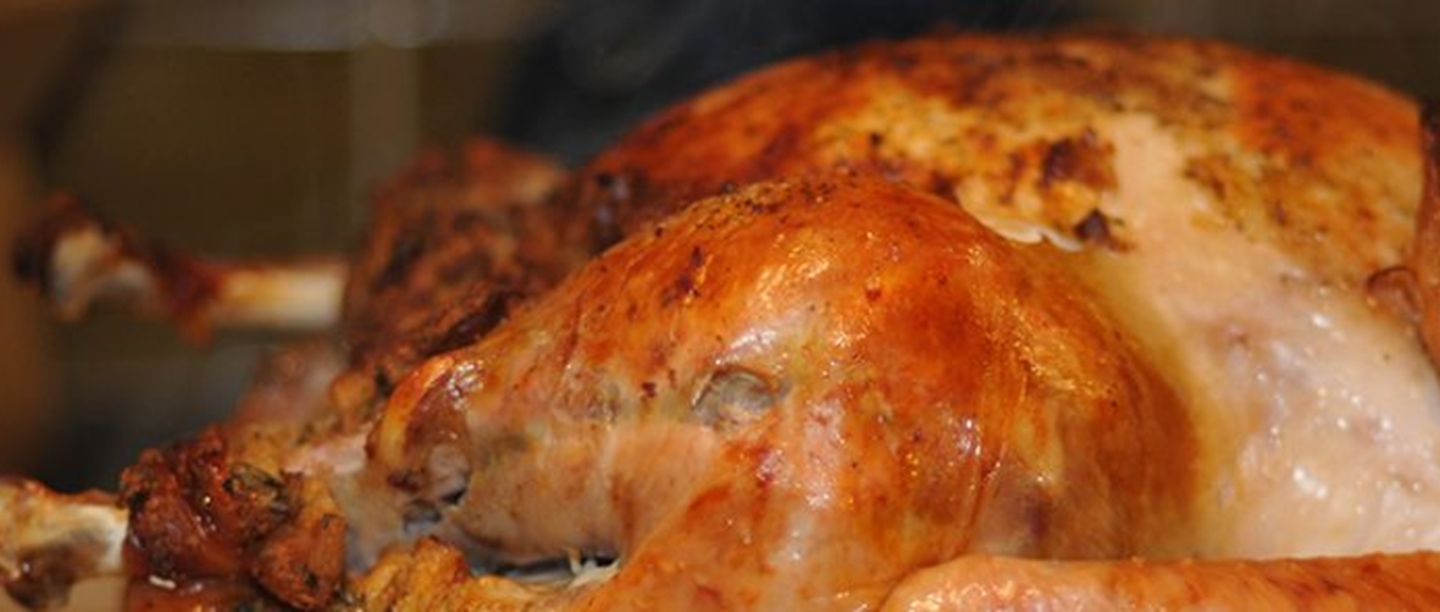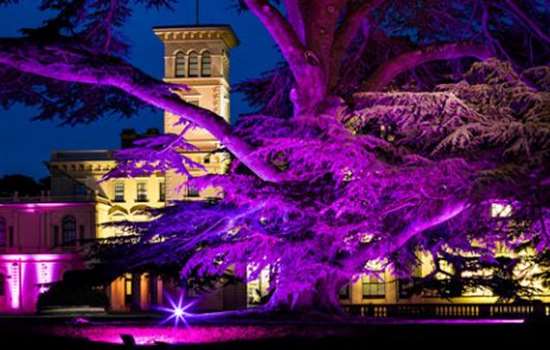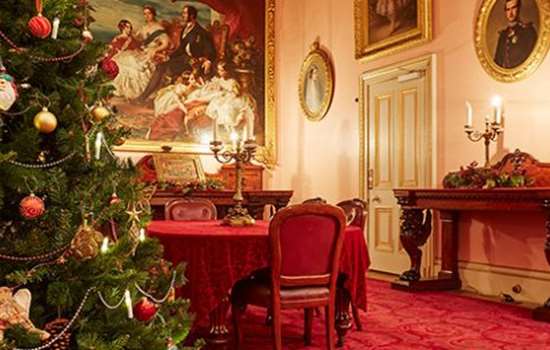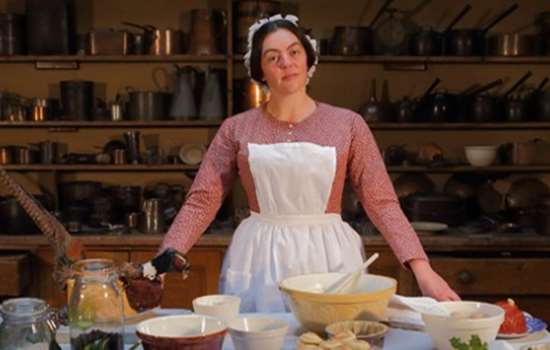
In Britain we tend to think of a ‘traditional’ Christmas dinner as all about the turkey. The bird has been associated with winter feasting since the late Tudor era, but it wasn’t until the 20th century that it became quite so obligatory on December 25th. Even in the Victorian period, turkey was by no means the only meat on the Christmas table, and dinner varied hugely according to class.
The upper class dinner
Until the mid to late 19th century, most upper class diners (such as Lord and Lady Braybrooke at Audley End House) were served à la Française, with many dishes placed simultaneously on the table in 3 courses. By the end of the century, it was more usual to serve sequentially, with dishes offered to each diner from the side, rather than put on the table for people to help themselves. Regardless of service style, by the end of the century, certain dishes appeared on nearly every Christmas menu.
The meal started with a choice of soup. Palestine Soup, made with Jerusalem artichokes was usually one of them (flatulence has long been a part of the British Christmas). Fish was next, then éntrées, which were fancier dishes such as sweetbreads and mutton cutlets, or poached meat with a rich sauce. The peak of the meal was something roasted. The meat would be cooked, rather inefficiently but very tastily, on a spit in front of an open fire. You can still see one in place in the kitchen at Audley End House. Turkey appeared frequently on upper class Christmas menus, but was not obligatory, and it wasn’t always the main roast. Indeed, it was often served as an entrée, either boiled with celery or galantined and stuffed with forcemeat, which in the Victorian era was usually based on veal. For much of the 19th century the roast was still almost always the British classic sirloin of beef, though mutton was also eaten – the Audley End records show both being consumed in large quantities. Roast game was also obligatory, preferably shot on the estate by the hordes of pre-Christmas visitors.
After the roast came vegetables, which might include sprouts, but were more likely to be asparagus. Serving unseasonal veg demonstrated wealth and status. There’d also be a series of sweet dishes like plum pudding (known as Christmas pudding by the 1870s), mince pies, and chestnutty confections. In earlier times, the plum pudding had been served at the same time as the roast beef, and made a perfect accompaniment to it, but by the late Victorian period they had been separated out. Dessert was nuts, ices and hothoused fruit.
Mrs Crocombe’s recipe for Galantine of Turkey
Servants
In general, servants in country houses could expect to eat around a pound of meat a day – the average for the working classes was 1 3/4 lb a week. And they ate even more at Christmas. At Audley End, records show that there was a servants’ Christmas dinner on Boxing Day, and a Servants’ Hall ball around the end of December. The upper servants had a meal and a party of their own. In 1876 there were 33 guests along with the normal servants at the general servants’ dinner, 52 guests at the ball, and a more select 14 guests coming for the upper servants’ dinner.
We don’t know exactly what the Audley servants consumed, though the household supply books show mutton, beef, veal, turkey, rabbit and lots of game. Punch would almost certainly have been served, along with a boiled plum pudding. Avis Crocombe’s recipe book contains a recipe for a Christmas cake containing 50 eggs, which was almost certainly destined for the servants’ ball (it’s definitely not on a par with the upper class recipes for Christmas cake, or Twelfth cake, its predecessor).
Keeping the fire going in the kitchens of Audley End House
The poor
Of course, the vast majority of people in Victorian Britain were not rich, and, while domestic service was one of the most significant employers, most servants did not work in country houses – many didn’t even get full board. The working class Christmas dinner varied hugely depending on income. With up to two thirds of the working class living in or below the poverty line at any one time, in many cases it was hardly a feast. But even the workhouses and the prisons generally stopped work on the 25th. Benefactors supplied the money to give inmates a meal of beef and plum pudding, with plenty of potatoes for filler.
Assuming you could afford a few extras for the festive season, the most common choice was goose. Many people joined goose clubs to save up for their goose throughout the year. Like turkey, goose was in season in December – domesticated poultry was regarded as at its best in the winter, hence its association with Christmas. It was best roasted in front of an open fire, and those who couldn’t afford a roasting mechanism were known to use a piece of string, twisted round on itself, which would gradually untwist and retwist with the bird dangling vertically on the end. Otherwise, bakers, like many other food sellers, stayed open on Christmas morning, and their customers would bring their meat to be cooked in the huge bakers’ ovens. Accompaniments were potatoes, root veg and, invariably, plum pudding, which could be cooked in the laundry copper if there wasn’t a saucepan big enough.
A party at the goose club depicted in a wood engraving from 1853 © Alamy
The middling sorts
So who was left? Was there a real turkey-eating class? Well, sort of. Mrs Beeton, in 1861, wrote that
‘A Christmas dinner, with the middle classes of this Empire, would scarcely be a Christmas dinner without its turkey, and we can hardly imagine and object of greater envy than is presented by a respected portly pater familias carving, at the season devoted to good cheer and genial charity, his own fat turkey and carving it well’.
Beeton’s Book of Household Management was aimed squarely at this class, or at least at those aspiring to be part of it, and she knew her audience. In reality, many middle class families also chose to eat beef, goose or a mixture of meats as their main dish, especially for the roast, but the steady creep of the turkey into its modern position as the dominant Christmas dish had clearly begun.
Christmas with English Heritage
Browse our range of Christmas events, get hands-on with craft ideas and traditional Victorian recipes, and discover all the historic places you can explore over the festive season.
Find out more


